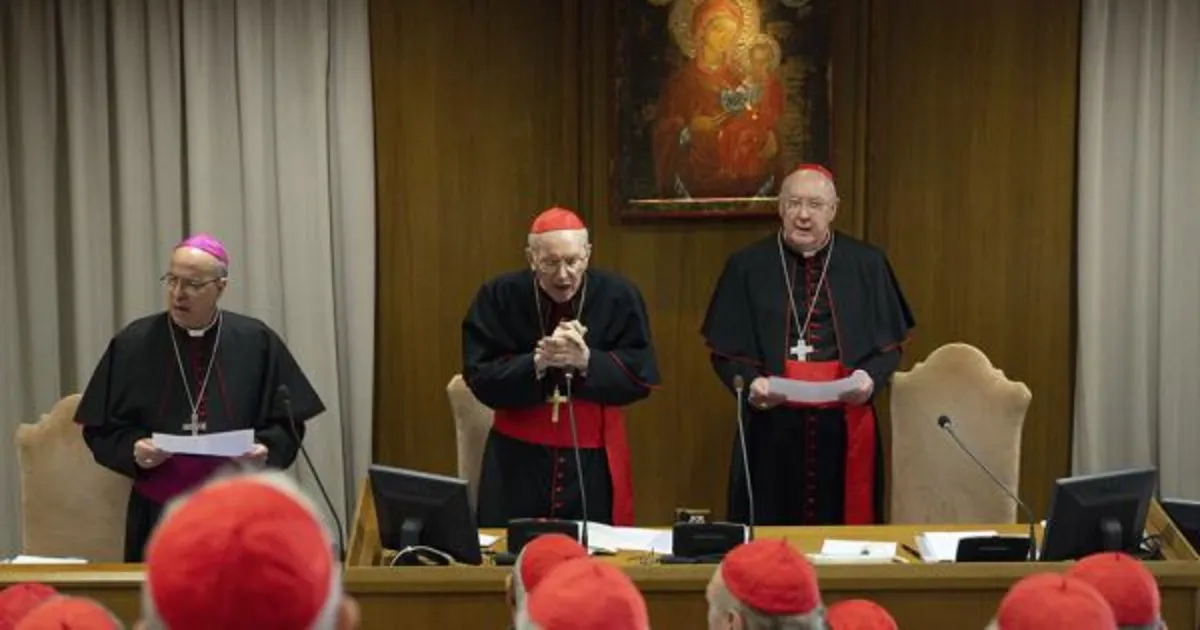
In the wake of Pope Francis' passing, a significant gathering took place within the Vatican on April 22, where 60 cardinals convened to swear an oath. This meeting marked the beginning of critical and secretive discussions regarding the late pontiff's final arrangements, while also laying the groundwork for his successor. By April 25, just one day prior to Francis' funeral, the number of participating cardinals had surged to 149. These gatherings, known as general congregations, are vital in the lead-up to the conclave, where cardinals will elect a new pope.
These general congregations play a pivotal role, potentially even surpassing the significance of the conclave itself. Veteran Vatican journalist John Thavis noted that 12 years ago, a speech delivered by Argentina's Cardinal Jorge Mario Bergoglio during a similar congregation was instrumental in his election as pope. Unlike the conclave, which is a formal voting process, general congregations provide a more open and discussion-oriented platform for cardinals to exchange ideas, assess potential candidates, and advocate for their preferred choices.
As of now, nearly 70 individual speeches, referred to as interventions, have been recorded, highlighting the cardinals' eagerness to engage in dialogues that will shape the future of the Catholic Church and the leadership of its 1.4 billion followers. Notably, only 135 cardinals under the age of 80 can participate in the conclave itself, whereas the general congregations are inclusive of all 252 members of the College of Cardinals.
This period serves as an opportunity for the cardinals to reevaluate the Church's pastoral priorities and assess key personalities who may be suited for the papacy. Michael Higgins, author of The Jesuit Disruptor: A Personal Portrait of Pope Francis, emphasized that the general congregations allow for a nuanced evaluation of potential papabili, or candidates for the papacy. These meetings foster a relaxed atmosphere where cardinals can interact and build relationships, making it easier for them to discuss their perspectives and concerns.
In addition to formal speeches, informal interactions during breaks and walks to and from the Vatican play a crucial role. Such encounters provide cardinals with the chance to get to know each other better, posing questions and sharing insights about the future leader of the Church. For about 80% of the conclave voters, this experience is entirely new, necessitating time to absorb ideas and evaluate prospective candidates, particularly as many of the newly appointed cardinals hail from regions and backgrounds less familiar to the established hierarchy.
During the 2013 conclave, a notable division existed among cardinals regarding the urgent need for reform within the Roman Curia, the Church's central governing body. Following a series of scandals, including abuse cases and financial mismanagement, there was a palpable desire for an outsider to lead the Church towards renewal. Although campaigning for the papacy is prohibited, cardinals are free to express their views. In 2013, Cardinal Bergoglio's candid insights inadvertently propelled him into the papacy, despite his initial reluctance.
In a brief yet impactful four-minute address, he urged the cardinals to avoid becoming self-referential and to actively evangelize, emphasizing the need for the Church to engage with the world. He quoted the Revelation, illustrating that Jesus knocks both from the outside and within, encouraging a Church that opens its doors to the faithful.
As the cardinals return to the general congregations in anticipation of the conclave, likely to commence by May 6, the history of these meetings reminds us of their profound implications. The deliberations behind the Vatican's closed doors could pave the way for transformative changes within the Catholic Church, ushering in a new era of leadership and direction for its vast global community.